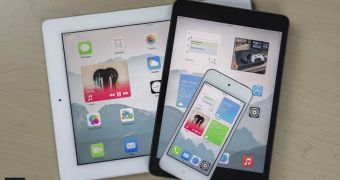Apple isn’t too worried about competition. Or so it says, whenever its executives are asked about Android and Windows. But they know they’re not doing everything in their power to get everyone to join their cult.
Designer Jay Machalani thinks he has the solution. His iOS Block concept shows how iOS could blend the Windows Phone’s Live Tiles with Android’s ability to put widgets on the home screen without sacrificing the look and feel of iOS.
In what could well be the most ambitious iOS concept to date, Jay Machalani’s design looks very doable. In a video he put together to show the blocks in action, he explains how the user would simply expand his / her fingers on any given icon to create a block out of it. Pinching it would reduce its size to a normal app icon.
“You can interact with a Block and actually do stuff with it. But, you can also access the application directly from the Block since it is the app itself, not a separate entity,” says Machalani.
Blocks would act as previews to the content inside each app. For example, expanding Calendar would show you the latest appointments, Weather would give you readings beyond temperature, Stocks would give you the latest quotes, and Music would expand to offer quick playback controls.
Everything is just a work in progress according to Machalani, but he’s more than willing to take suggestions from people, and he even encourages developers to work with the idea. By mashing together the best Android and Windows Phone have to offer, iOS would become king in less than a year.
“This would only be the first step to really push iOS forward, but a crucial one to really offer a better solution than opening and closing every single application,” Machalani adds.
With iOS 8 just around the corner, we can only hope Apple itself has thought about including this functionality.
One thing we hear is coming in iOS 8 but won’t be on hand for the WWDC showcase is split-screen multitasking. A feature pioneered by Microsoft in the Windows RT build pre-installed on Surface tablets, split-screen multi-tasking allows tablet users to employ more than one app and even swap content between them.
For example, you’d be able to have photos open on the right and a text editor on the left, and you could drag a photo from the right side over to the left side to include it in your document. Sounds simple when you say it, but it’s tougher than you think to implement.

 14 DAY TRIAL //
14 DAY TRIAL // 